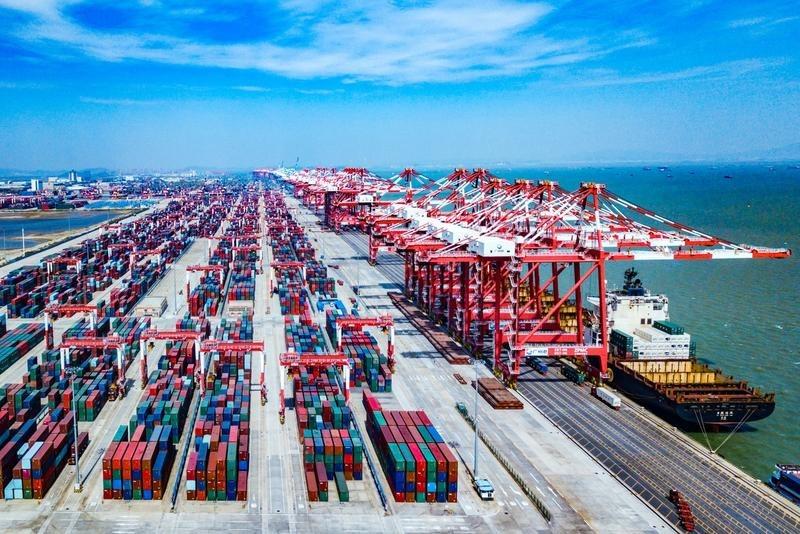ADB: High-tech, manufacturing sectors to keep China away from middle-income trap
 This undated photo shows a view of Nansha Port in Guangzhou, South China's Guangdong province. (PHOTO PROVIDED TO CHINA DAILY)
This undated photo shows a view of Nansha Port in Guangzhou, South China's Guangdong province. (PHOTO PROVIDED TO CHINA DAILY)
China's top provincial economies — Guangdong, Jiangsu, Shandong, and Zhejiang — are taking the lead in ensuring stable and high-quality growth, shaping a promising trajectory for China's 2024 economic outlook, said experts.
They said the robust performance of the four provinces in 2023 showcases the strong resilience and vitality of the Chinese economy, while laying a solid foundation for sustained growth in 2024.
Looking ahead, experts and entrepreneurs said they expect the economy to pick up steadily in the current year, with strong policy support, continued recovery in consumer spending and the diminishing downward impact of real estate investment.
The southern coastal province of Guangdong became the first province in China to post a GDP of more than 13 trillion yuan ($1.81 trillion) last year, finishing as the top provincial economy in the country for the 35th consecutive year. The economic output of Shandong and Zhejiang also touched highs, exceeding 9 trillion yuan and 8 trillion yuan, respectively.
Eastern China's Jiangsu became the first Chinese province with five cities recording a GDP of over 1 trillion yuan each. The province as a whole reported a GDP of over 12 trillion yuan last year, ranking second.
Feng Jianlin, chief economist at Beijing FOST Economic Consulting Co, attributed the robust performances to solid economic foundations and robust internal dynamics, saying the provinces have made great strides in deepening reforms and opening-up, improving the business environment, fostering a relatively vibrant private sector and enhancing innovation capabilities.
"Economically strong provinces will continue to play a key role in supporting China's steady economic growth this year," he said.
Despite challenges and mounting uncertainties ahead, Feng said, the "around 5 percent" GDP growth is achievable this year. "We will see improvements in the services sector and employment, while household incomes and consumption are expected to maintain steady growth. Investment growth is expected to outpace that of 2023, with real estate development investment poised for improvement."
Safdar Parvez, the Asian Development Bank's country director for China, said the ADB forecasts that China's economic growth will remain solid at 4.5 percent in 2024, supported by a continuous recovery of the services sector and efforts to expand domestic demand, particularly consumption.
"There is room for continued accommodative monetary and fiscal policies to support this growth level."
China's central bank announced on Wednesday that it will cut the reserve requirement ratio by 0.5 percentage point on Feb 5 to provide liquidity of about 1 trillion yuan ($140 billion) in the market.
Ye Yindan, a researcher at the Bank of China Research Institute, said more financial policies are needed to strike a balance between ensuring stable growth, promoting reforms and preventing risks.
Looking into the future, Parvez from the ADB said he has "very little doubt" that China will be able to avoid the middle-income trap as the country has strong, sophisticated manufacturing and high-tech sectors.
The middle-income trap refers to economies stagnating at middle-income levels and failing to graduate to high-income economies.
Marc Horn, president of Merck China, said the science and technology company is optimistic that the ongoing implementation of measures to further open up the market indicates China's commitment to fostering a more transparent and accessible business environment.
Zhou Haijiang, chairman of garment giant Hodo Group in Wuxi, Jiangsu, said that the province's achievements in 2023 have been inspiring, and private enterprises should make full use of the good environment to embrace new opportunities and to expand to the global market.
Cang Wei in Nanjing contributed to this story.
Contact the writers at ouyangshijia@chinadaily.com.cn


